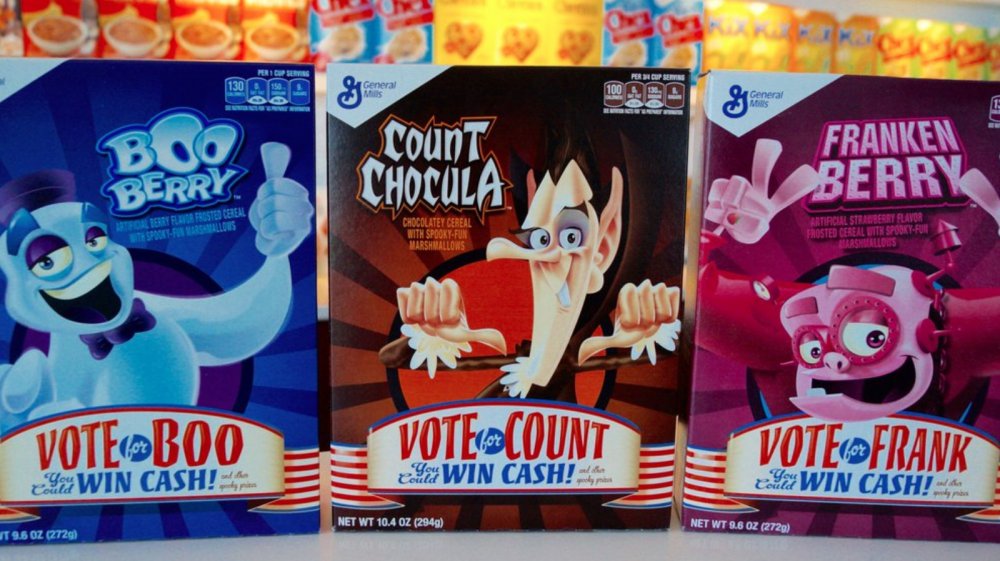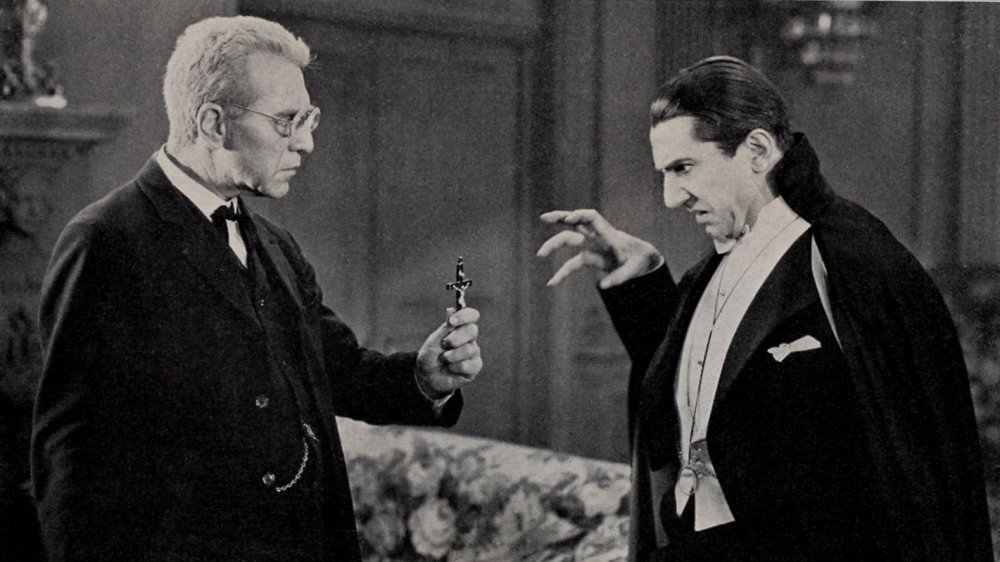The Truth About Count Chocula's Surprisingly Controversial History
Those who grew up on Saturday morning cartoons barely blink an eye at the bizarre phenomenon that is monster-themed children's cereal. So how exactly did these boxes of sugary cereal end up featuring blueberry ghosts, strawberry Frankensteins, and a vampire with a predilection for all things chocolate come to be? According to Mental Floss, the originator of these spooky breakfasts was a man named Tony Jaffe, who sought to come up with a competitor for the wholesome Cap'n Crunch and Tony the Tiger mascots that were so popular at the time.
Laura Levine was a copywriter who worked for Jaffe at the time. She recalls Jaffe's concept focusing on monsters, a popular media trend at the time. History Daily explains that during the 1970s, monsters were hot. The Addams Family and The Munsters dove into the darkly comical everyday lives of monster families living in the American suburbs, while movies like Frankenstein and the Monster from Hell packed theaters with moviegoers looking for a scare.
Count Chocula and Franken Berry hit supermarket shelves in March of 1971 and were a hit from the jump, but much like movie monsters, the story arc of these cereals was dotted with strange twists and turns. The first bump in the monster cereal road came the following year when the red dye used in the Frankenstein-themed box sent several children and parents into panic mode when something called "Franken Berry stool" occurred, but we'll leave that one to the medical professionals.
Count Chocula's controversial box
The year was 1987 and the ad team at Count Chocula was way ahead of the game, technology-wise. They had figured out how to cut together images from old horror movies and incorporate them into the cereal's packaging (via The 13th Floor TV). Between classics like Nosferatu and Dracula, and niche titles such as Dracula in Istanbul, and the more recent Love at First Bite, there was no shortage of vampires to choose from when it came time to release a special edition box.
Ultimately, the design team went with Bela Lugosi's take on the vampire. The box featured a cloaked Lugosi standing behind the cereal's animated mascot, starting straight forward and holding a candlestick. Along with a white tie and waistcoat, Lugosi's Dracula sported a six-sided medallion as seen in the film (via the Academy of Motion Pictures Arts and Sciences). The accessory was mistaken for a Star of David which sent a ripple through the Jewish community. The Jewish community associated the visual with the anti-Semitic Middle Ages concept of blood libel, which accused Jews of killing Christians and using their blood for rituals such as making matzah for Passover (via ADL). In the end, even after protests the cereal's parent company, General Mills, issued an official apology but refused to recall the boxes emblazoned with Lugosi's controversial medal (via The Los Angeles Times).
These days, vintage cereal box collecting is a big deal and the 1987 Count Chocula box fetches over $100 on eBay.

